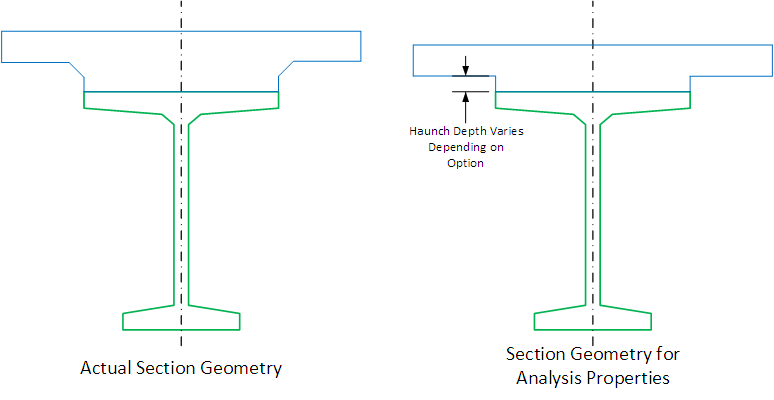|
PGSuper
5.1
Precast-prestressed Girder Bridges
|
|
PGSuper
5.1
Precast-prestressed Girder Bridges
|
PGSuper provides the following options for treatment of the slab haunch when calculating composite section properties and section-based capacities.

| Option | Description |
|---|---|
| Zero haunch depth | The slab lies directly on the top of the girder. This provides the least-stiff section so it is conservative for computing stresses and deflections, and it makes structural modeling easy because we have a prismatic section. |
| Constant haunch depth equal to the Fillet value | The haunch depth is constant along the girder and equal to the Fillet dimension. This method provides a mid-ground for conservatism and simplicity. |
| Variable haunch depth... | Haunch depth varies along the girder, and is defined by a parabola fitting the Slab Offset, Roadway Geometry, and Assumed Excess Camber dimensions. The top of the girder is assumed to follow a parabolic curve fitting the Assumed Excess Camber value. This is the most accurate , least conservative, and least computationally efficient method; and is primarily intended for load rating and evaluation. |
NOTE: Material within the angular fillet shape of the haunch is ignored for analysis purposes.
NOTE: A specification check is performed for the variable haunch depth case to insure that the assumed excess camber is within tolerance of the computed excess camber.
NOTE: The zero haunch depth option is always used by PGSplice.